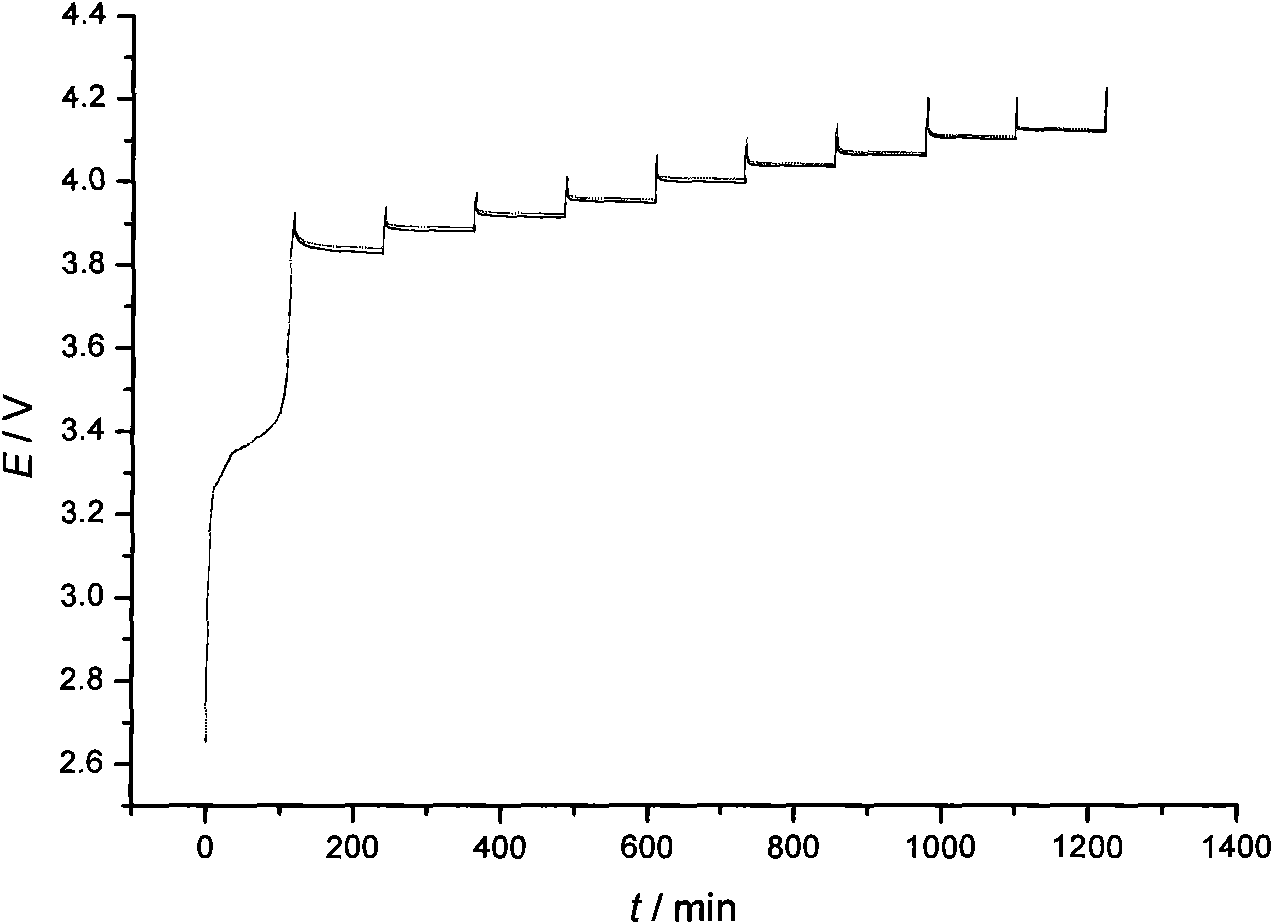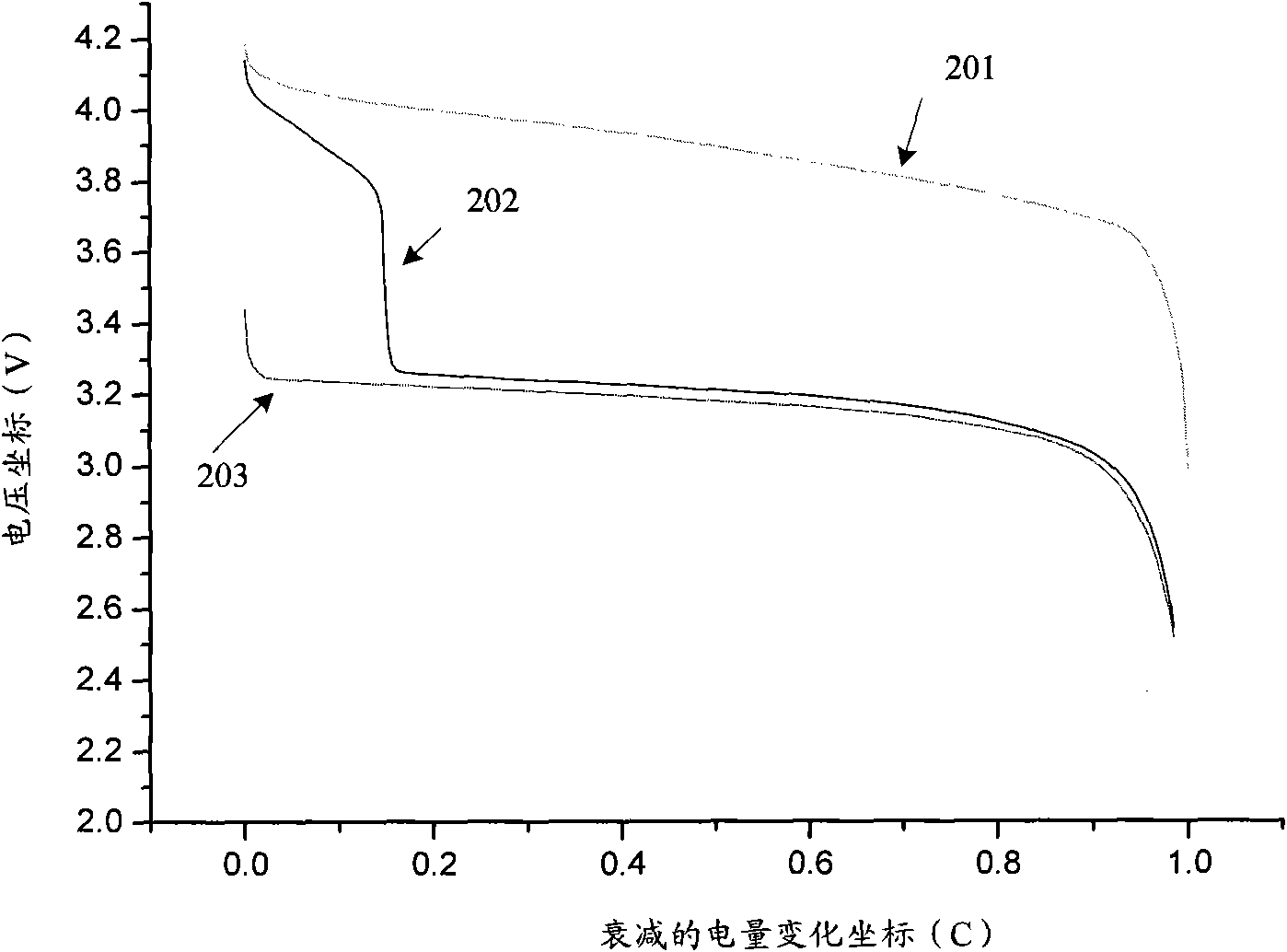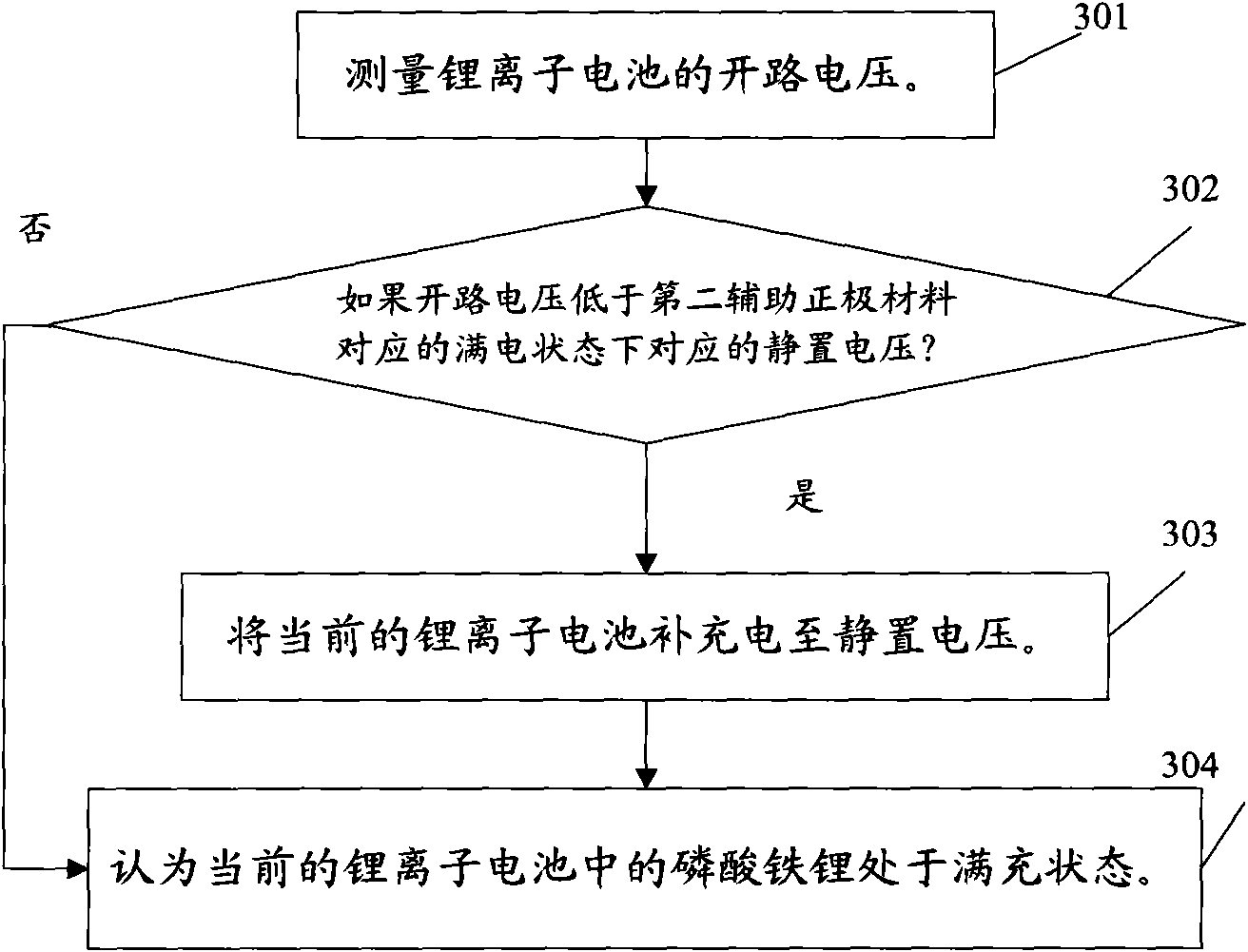Lithium iron phosphate lithium ion battery as well as electricity quantity status test method and pairing method thereof
A lithium-ion battery and lithium iron phosphate technology, which is applied in non-aqueous electrolyte battery electrodes, secondary batteries, and measuring electrical variables, etc., can solve the problem of low battery pack life, unbalanced lithium-ion battery power, and inability to know the lithium-ion battery power Status and other issues to achieve the effect of ensuring quality and life
- Summary
- Abstract
- Description
- Claims
- Application Information
AI Technical Summary
Problems solved by technology
Method used
Image
Examples
Embodiment 1
[0034] This embodiment provides a lithium-ion battery suitable for use. The lithium-ion battery can be a lithium-ion battery of various specifications or shapes at present, including: a wound battery cell, which is stacked by a stacked positive electrode sheet, negative electrode sheet, and separator. or coiled. Wherein the separator is spaced between the positive electrode sheet and the negative electrode sheet. The difference between this lithium ion battery and the lithium iron phosphate battery in the prior art is that:
[0035] In addition to the main material of lithium iron phosphate, the positive electrode material coated on the positive electrode sheet also includes a second auxiliary positive electrode material whose discharge platform is higher than that of lithium iron phosphate.
[0036] It can be seen from the above that, applying the technical solution of this embodiment, in addition to the main material lithium iron phosphate, the positive electrode material al...
Embodiment 2
[0055] image 3 It is a schematic flowchart of a method for detecting the state of charge of a lithium-ion battery provided in this embodiment. The lithium ion battery is the lithium ion battery described in Example 1.
[0056] see image 3 As shown, the process mainly includes:
[0057] Step 301: Measure the open circuit voltage of the lithium ion battery.
[0058] Its test method can be any one in the prior art.
[0059] Step 302: If the open circuit voltage is lower than the resting voltage corresponding to the fully charged state corresponding to the second auxiliary positive electrode material, perform step 303; otherwise, perform step 304.
[0060] For example, when the second auxiliary positive electrode material is lithium manganate, the full charge static voltage corresponding to lithium manganate is about 3.85V, that is, in this step, when the current open circuit voltage V0<3.85V, it is considered that the current lithium The lithium iron phosphate, the main po...
Embodiment 3
[0066] Figure 4 It is a schematic flow chart of the pairing method for the lithium-ion battery provided in Embodiment 1.
[0067] see Figure 4 As shown, this embodiment is relative to image 3 The only difference is that:
[0068] After step 304, also include battery pairing step:
[0069] Step 401: According to the capacity level of each lithium ion battery, pair each lithium ion battery to form a battery pack.
[0070] In the case of ensuring that the current lithium-ion batteries to be paired are fully charged, the lithium-ion batteries in this embodiment are paired according to the original capacity level of each lithium-ion battery, and are composed of multiple lithium-ion battery cells Li-ion battery pack.
PUM
 Login to View More
Login to View More Abstract
Description
Claims
Application Information
 Login to View More
Login to View More - R&D
- Intellectual Property
- Life Sciences
- Materials
- Tech Scout
- Unparalleled Data Quality
- Higher Quality Content
- 60% Fewer Hallucinations
Browse by: Latest US Patents, China's latest patents, Technical Efficacy Thesaurus, Application Domain, Technology Topic, Popular Technical Reports.
© 2025 PatSnap. All rights reserved.Legal|Privacy policy|Modern Slavery Act Transparency Statement|Sitemap|About US| Contact US: help@patsnap.com



